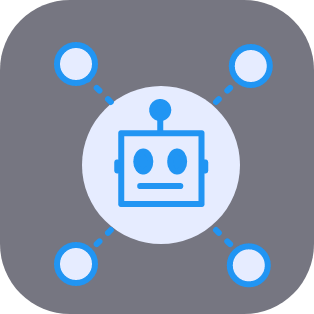The year was 1971. The big IBM 360 mainframe at The Technion, Israel’s Institute of technology, was down for 3 days: Its internal memory was being upgraded from 1MB to 2MB! I was 16 years old, my freshman year in the Department of Computer Science. To hide my very young appearance, I grew hair down to my shoulders, and smoked a tobacco pipe during classes (it was allowed!). We were all fascinated with Eliza, Joseph Weizenbaum’s prototype of a speaking computer program, which was just getting worldwide attention.
One of the very first courses in this freshman year was “Finite Automata”. It was one of my favorite courses (probably because it didn’t need calculus). I was particularly fond of Turing Machines. So I was amazed by the simplicity of the model on one hand, and by the fact it can simulate any algorithm. Additionally, it drew my attention to Alan Turing himself, The man behind the machine, and more importantly behind the Turing TEST.
Some more great reading
Why do we need global variables in open domain chatbots?
What is “Deep context switching” in conversational AI?
The conversational AI and chatbots glossary
Alan Turing had taken his own life in tragic circumstances 17 years earlier. Not long before, he published a landmark article called “Can Machines Think?”. I read this article 49 years ago, and I am under its influence til this day. In a nutshell it addressed the question of “Intelligent Machines”, that could “really think”. In this article, written 4 years before his death, Turing identified rationality, or “the ability to think” or “intelligence”, with the mere, simple capacity to hold a humanlike conversation.
He devised a thought experiment he called “The Imitation Game”, including two speakers (of a natural language), one trying to fool the other regarding some key aspect, like his gender. The same kind of game can be played between a human and a computer program, with the program “trying to fool” the human into believing he is conversing with a fellow human. This scenario is known as the famous Turing Test, a test many Chatbot developers have tried to pass over the years, with varying degrees of failure.
From then on, the term “Artificial Intelligence” stayed with me as the holy grail of computer science. A computer that can behave like a person! As an avid Science Fiction fan, I knew very well that “behaving like a person” does not necessarily require a body. When we typically engage with another human and assess his behavior, it is the lingual behavior that counts. “Artificial Intelligence” is a software program (even without any physical features) that can speak just like a human.
“If it works, it’s not AI”
Years went by. I spent the next 3 decades at the heart of the technological revolution. I developed applications, Enterprise systems, software development tools, and throughout all this time the term “AI” rarely came up. It was often used to describe technological innovations that are in the process of R&D but don’t quite work YET. We used to joke and say “If it works it’s not AI”…
In some cases, people tried to soften the definition and make the challenge more realistic. So the soft definition was “Programs that can learn”. In most cases, that meant learning from the user who uses them. I remember the first time someone tried to sell this new definition. Swiftly, that was my response: “So that means Microsoft Clippy, which learns the user’s preferences in using WORD, qualifies as “Artificial Intelligence”?
Soon things got worse. Towards the turn of the millenium, and even with greater force after the hi tech bubble burst in 2000, the term AI started to be seriously abused. So, I will not bore you with the chronological order it all happened, but before you knew it, the clear, simple, understandable term “Artificial Intelligence” was being used to describe the following:
Machine Learning
Expert Systems
Data Mining
Deep Learning
Neural Networks
Heuristic Search
Image Recognition
Speech Recognition
Big Data
NLP/NLU/NLG
Language Translation
Machine Vision
Fuzzy Logic Systems
Cognitive Computing
What does “AI” even mean nowadays?
In fact, the current use (or, rather abuse) of the term “AI” has stripped it from any meaning. All of the above, and much more, can be categorized as “AI”, that it almost doesn’t mean anything any more.
Meanwhile, people continued trying to make software that could, potentially, take a shot at the good old Turing Tests. Usually these attempts were done by hobbyists and enthusiasts, who competed for a $1,000 prize at “Loebner’s Turing test Competition”. Thus, these abysmal attempts at AI were given a cheap, demeaning name: Chatterbots, or Chatbots. Nothing to do with AI..
Another 2 decades went by (well, almost). In the past two years, I was happy to follow the emerging new buzzword: Conversational AI. NOW you’re talking! The domain of “Software systems that imitate humanlike lingual behavior” finally has a proper label, almost as good as the original “AI”. The prefix “Conversational” clarifies the type of intelligence (which, in mine and Turing’s view, is the only kind that really counts).
The case of “Joe Sixpack”
So, the task at hand is not to build a system that knows much. I had the pleasure of being acquainted with a dude who referred to himself as “Joe Sixpack”, and was proud of the fact he was thrown out of school in 3rd grade. So this guy was clueless in almost every conceivable topic, but there was absolutely no question that he was a rationally English speaking adult, although he knew practically nothing about anything. Anyway, this Joe became my perfect example of what a good Chatbot need NOT possess: Much knowledge; information; manners; not even acceptable values. Just the ability to hold the thread of the dialog, and understand only what it takes, in order to produce a response which indicates such understanding.
So the real holy grail of (Conversational) AI is this: To effectively mimic Natural Stupidity, as it manifests itself in humans like Joe Sixpack. Once we get there, giving him a college education would be a piece of cake.









